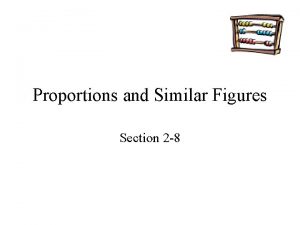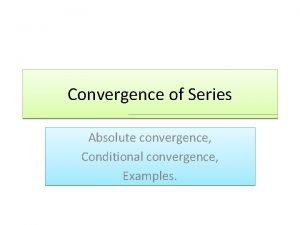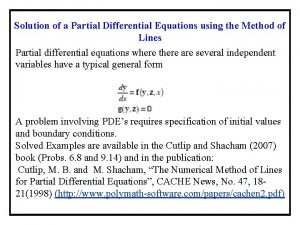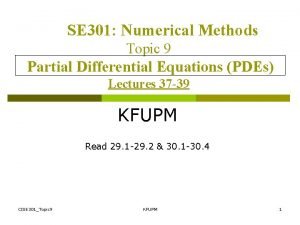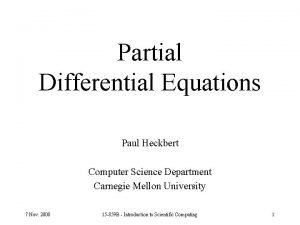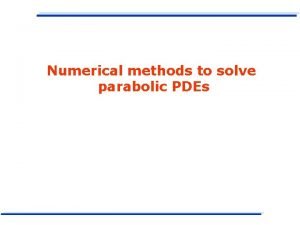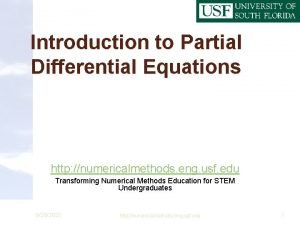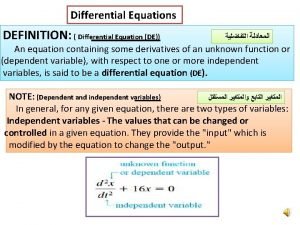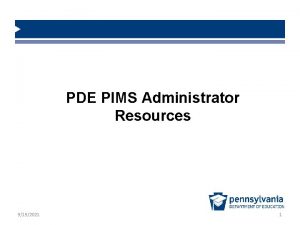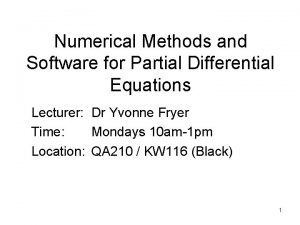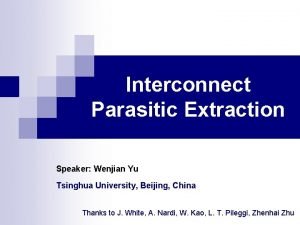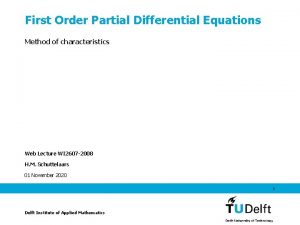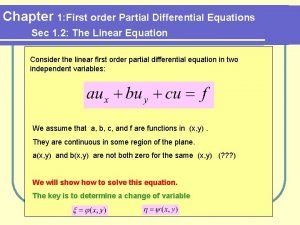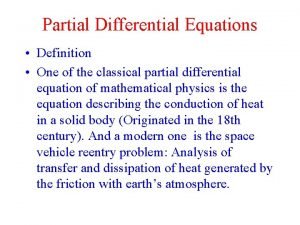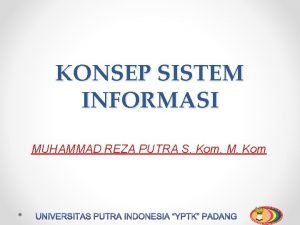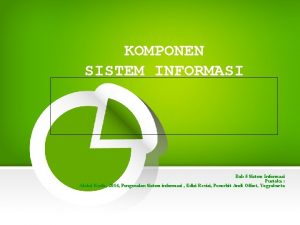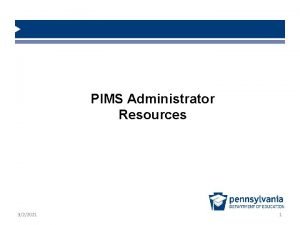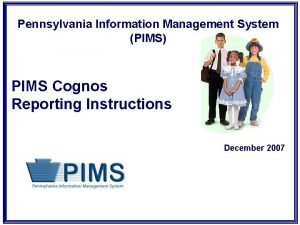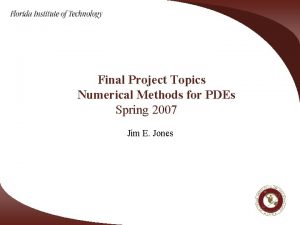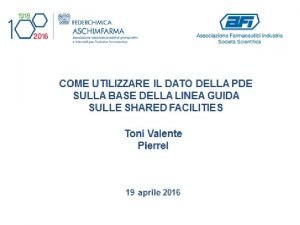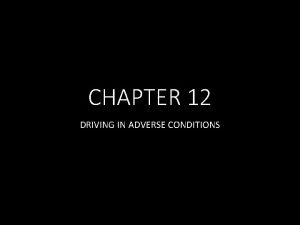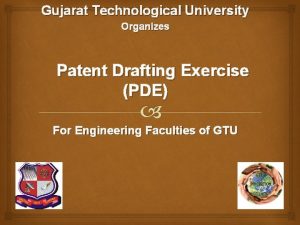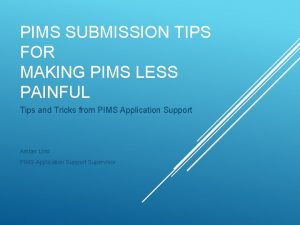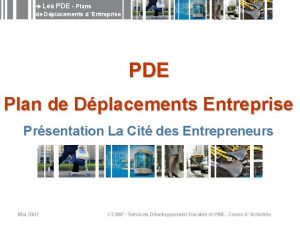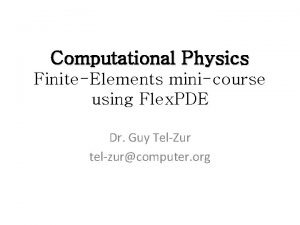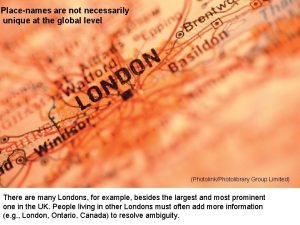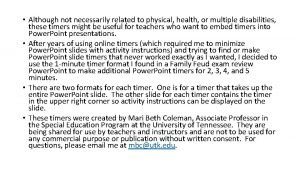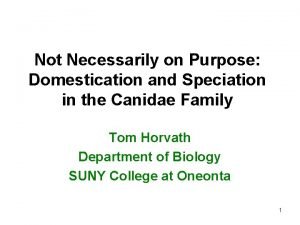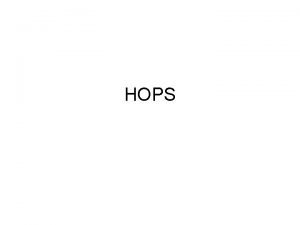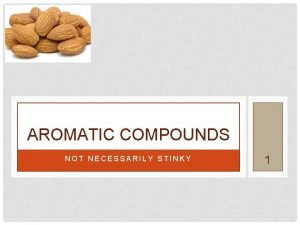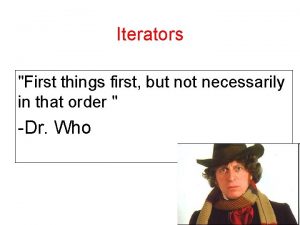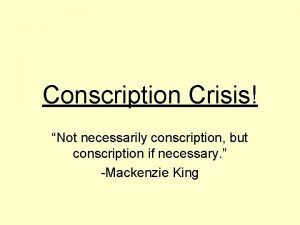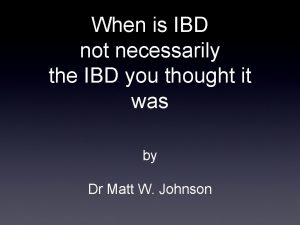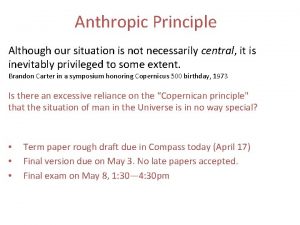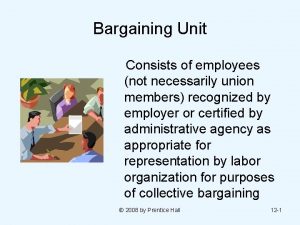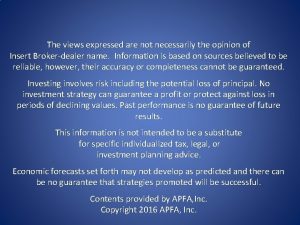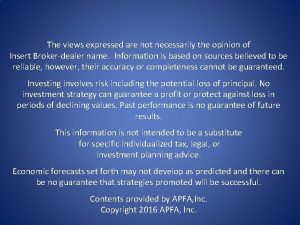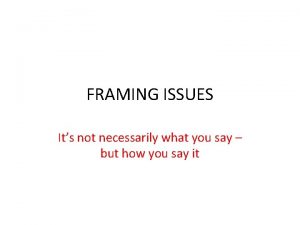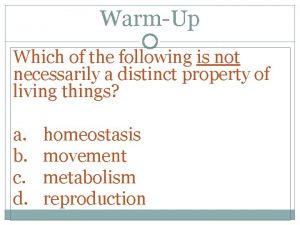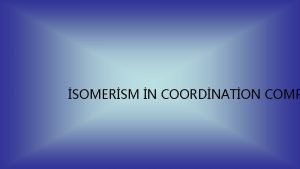PDE Methods are Not Necessarily Level Set Methods















































- Slides: 47

PDE Methods are Not Necessarily Level Set Methods Allen Tannenbaum Georgia Institute of Technology Emory University 1

PDE Methods in Computer Vision and Imaging q. Image Enhancement q. Segmentation q. Edge Detection q. Shape-from-Shading q. Object Recognition q. Shape Theory q. Optical Flow q. Visual Tracking q. Registration 2

Scale in Biological Systems 3

Micro/Macro Models-Scale I 4

Micro/Macro Models-Scale II 5

How to Move Curves and Surfaces q. Parameterized Objects: methods dominate control and visual tracking; ideal for filtering and state space techniques. q. Level Sets: implicitly defined curves and surfaces. Several compromises; narrow banding, fast marching. q. Minimize Directly Energy Functional: conjugate gradient on triangulated surface (Ken Brakke). 6

Level Sets-A History Independently: Peter Olver (1976), Ph. D. thesis Sigurd Angenent (Leiden University Report, 1982) Mathematical Justification: Chen-Giga-Goto (1991) Evans and Spruck (1991) 7

When Do They Work 8

Parameterized Curve Description infinite dimensional parameterization for derivations only, evolution should be geometric 9

Generic Curve Evolution The closed curve C evolves according to influences the curve’s shape moves “particles” along the curve How is the speed 10 determined?

Classification of Curve Evolutions 11

Classification of Curve Evolutions Kass, Witkin, Terzopoulos, "Snakes: Active Contour Models, " International Journal of Computer Vision, pp. 321 -331, 1988. 12

Classification of Curve Evolutions Terzopoulos, Szeliski, Active Vision, chapter Tracking with Kalman Snakes, pp. 3 -20, MIT Press, 1992. 13

Classification of Curve Evolutions Kichenassamy, Kumar, Olver, Tannenbaum, Yezzi, "Conformal curvature flows: From phase transitions to active vision, " Archive for Rational Mechanics and Analysis, vol. 134, no. 3, pp. 275 -301, 1996. Caselles, Kimmel, Sapiro, "Geodesic active contours, " International Journal of Computer Vision, vol. 22, no. 1, pp. 61 -79, 1997. 14

Classification of Curve Evolutions 15

Static Approaches Minimize using the functionals Kass snake (parametric) Geodesic active contour (geometric) 16

Static Approaches Minimizing leads to the Euler-Lagrange equations Kass snake (parametric) Geodesic active contour (geometric) 17

Static Approaches Minimizing results in the gradient descent flow Kass snake (parametric) Geodesic active contour (geometric) is an artificial time parameter 18

Dynamic Approach Minimize the action integral where is the Lagrangian, is the kinetic energy and is the potential energy. 19

Dynamic Approach Minimizing using the functional Terzopoulos and Szeliski (parametric) 20

Dynamic Approach Minimizing results in the Euler-Lagrange equation Terzopoulos and Szeliski (parametric) Here, is physical time 21

Dynamic Approach Minimizing results in the Euler-Lagrange equation Terzopoulos and Szeliski (parametric) But what about a geometric formulation? 22

Geometric Dynamic Approach Minimize using the Lagrangian results in the Euler-Lagrange equation 23

Geometric Dynamic Approach We can write We then obtain the following two coupled PDEs for the tangential and the normal velocities: The tangential velocity matters. 24

PDE’s Without Level Sets: Some Examples 25

Cortical Surface Flattening-Normal Brain 26

White Matter Segmentation and Flattening 27

Conformal Mapping of Neonate Cortex 28

Surface Warping-Area Preserving 29

Flame Morphing 30

Anisotropic active contours • Add directionality 31

Curve minimization q. Calculus of variations l Start with initial curve l Deform to minimize energy l Steady state is locally optimum Registration, Atlas-based segmentation q. Dynamic programming l Choose seed point s l For any point t, determine globally optimal curve t s 32 Segmentation

Synthetic example (3 D) 33

Stochastic Approximations 34

Curvature Driven Flows 35

Euclidean and Affine Flows 36

Euclidean and Affine Flows 37

Birth/Death Zero Range Processes-I q. S: discrete torus TN, W=N q. Particle configuration space: N q. Markov generator: 38 T N

Birth/Death Zero Range Processes-II q. Markov generator: 39

Birth/Death Zero Range Process-III q. Markov generator: q Each particle configuration defines a positive measure on the un q To make the curve zero barycenter, a corrected measure is use q Reconstruct the curve with: 40

The Tangential Component is Important 41

Nonconvex Curves 42

Stochastic Interpretation-I 43

Stochastic Interpretation-II 44

Stochastic Interpretation-III 45

Stochastic Curve Shortening 46

Conclusions q. Level sets are a way of implementing curvature driven flows. q. Loss of information. q. Modifications are necessary. q. Do not work if no maximum principle. q. Combination with other methods, e. g. Bayesian. 47
 Insidan region jh
Insidan region jh Anything worth doing is not necessarily worth doing well
Anything worth doing is not necessarily worth doing well Similar figures have the same but not necessarily the same
Similar figures have the same but not necessarily the same Similar picture
Similar picture Total set awareness set consideration set
Total set awareness set consideration set Training set validation set test set
Training set validation set test set Example of conditional convergence
Example of conditional convergence Is a pqdn necessarily shorter than the corresponding fqdn?
Is a pqdn necessarily shorter than the corresponding fqdn? Sadlier vocabulary workshop level d unit 1 synonyms
Sadlier vocabulary workshop level d unit 1 synonyms Pde solutions
Pde solutions Classification of pde examples
Classification of pde examples Standards aligned system pa
Standards aligned system pa Classification of pde examples
Classification of pde examples Classification of pde
Classification of pde Mais educação
Mais educação Pde
Pde Classification of pde examples
Classification of pde examples Differential equations definition
Differential equations definition Pims pde
Pims pde Classification of pde
Classification of pde Wenjian yu
Wenjian yu How to solve linear first order differential equations
How to solve linear first order differential equations Define ordinary differential equations
Define ordinary differential equations What is a first order equation
What is a first order equation Pde differential equation
Pde differential equation Siklus informasi
Siklus informasi Contoh arsitektur sistem informasi
Contoh arsitektur sistem informasi Pde 430
Pde 430 Pde pims
Pde pims Pims reports
Pims reports Pde project topics
Pde project topics Ema/chmp/cvmp/swp/169430/2012
Ema/chmp/cvmp/swp/169430/2012 Chapter 12 driving in adverse conditions
Chapter 12 driving in adverse conditions Pde form 2 gtu
Pde form 2 gtu Elliptic pde equation
Elliptic pde equation Pde pims
Pde pims Pde
Pde Flex pde
Flex pde Simec pde interativo
Simec pde interativo Bounded set vs centered set
Bounded set vs centered set Crisp set vs fuzzy set
Crisp set vs fuzzy set Crisp set vs fuzzy set
Crisp set vs fuzzy set Crisp set vs fuzzy set
Crisp set vs fuzzy set What is the overlap of data set 1 and data set 2?
What is the overlap of data set 1 and data set 2? Correspondence function examples
Correspondence function examples Metal coping fpd
Metal coping fpd I do not set my life at a pin's fee
I do not set my life at a pin's fee A collection of a well-defined objects
A collection of a well-defined objects



